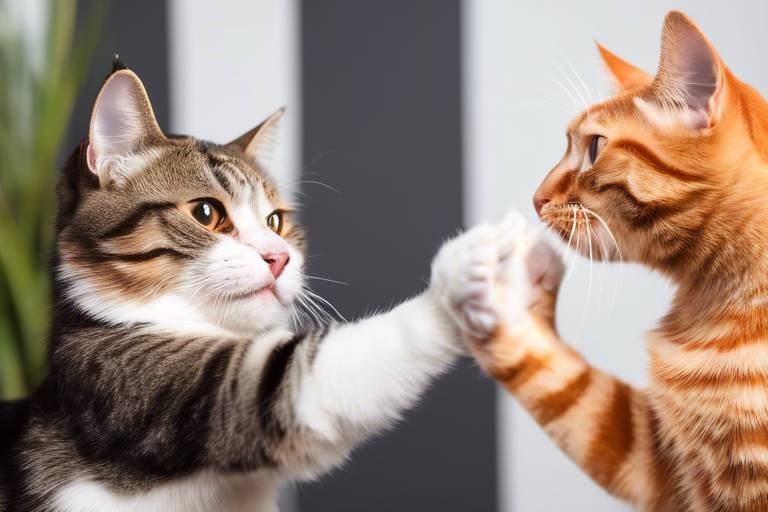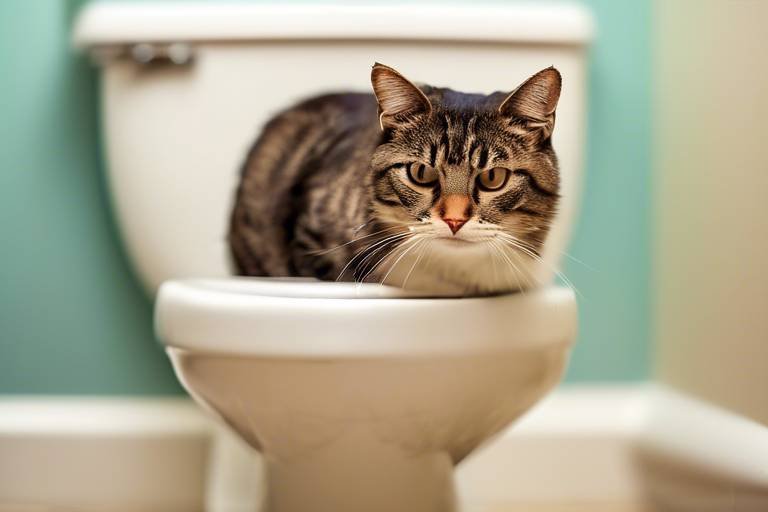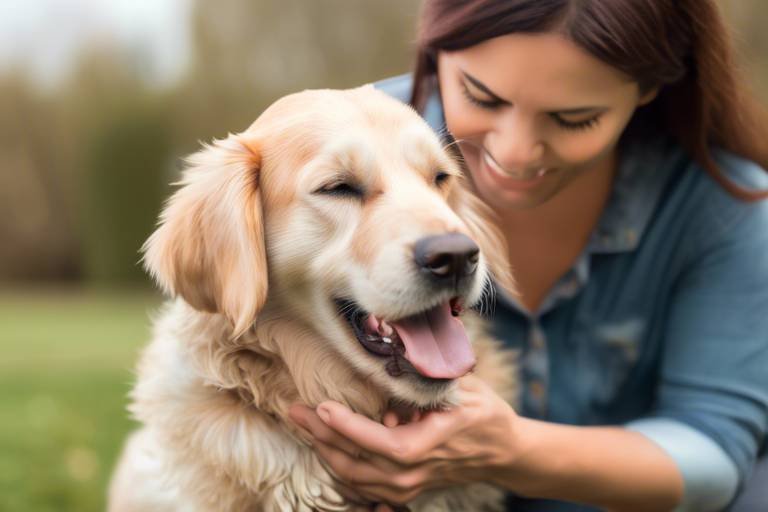How to Teach Your Cat to High-Five
Have you ever watched a video of a cat high-fiving its owner and thought, "Wow, I wish my cat could do that!"? Well, you're in luck! Teaching your cat to high-five is not only a fun trick but also a fantastic way to strengthen the bond between you and your furry friend. It's like unlocking a new level in your relationship, where both of you can enjoy some quality time together. Plus, it provides your cat with much-needed mental stimulation, keeping their mind sharp and engaged.
Before diving into the training process, it's crucial to understand that cats are unique creatures with their own quirks and personalities. Unlike dogs, cats may not respond to commands in the same way, but that doesn’t mean they can’t learn! With a little patience and the right approach, you can teach your cat to perform this delightful trick. So, grab some treats, get comfy, and let’s get started on this exciting journey of training your cat to high-five!
Before you start training, it's essential to understand your cat's natural behaviors and instincts, which can help tailor your approach and make the learning process more enjoyable for both of you. Cats are naturally curious and playful, but they can also be independent and sometimes a bit stubborn. This means that the key to successful training lies in recognizing their unique traits and working with them rather than against them.
For instance, if your cat tends to be shy or easily startled, you might want to take a gentler approach, using soft tones and slow movements. On the other hand, if your cat is more adventurous and playful, you can use that energy to your advantage. Remember, every cat is different, and understanding their behavior will help you create a more effective training plan.
Creating a suitable training environment is crucial for your cat's focus and comfort. A quiet, distraction-free space can significantly enhance your training sessions and increase the likelihood of success. Think of this space as your cat's personal training ground, where they can feel secure and ready to learn.
To set the stage for successful training, you should remove distractions such as loud noises or other pets. This helps your cat concentrate better during training. Imagine trying to study for an exam while your friends are blasting music in the background; it’s nearly impossible! By creating a calm atmosphere, you're allowing your cat to focus entirely on you and the task at hand.
Another important factor is timing. Scheduling training sessions when your cat is naturally more active and alert can improve engagement. For example, many cats are more playful in the morning or after a nap. Observing your cat's daily routine will help you determine the best times for training, ensuring that both of you are in the right mood to learn and have fun.
Incorporating treats and praise as rewards for successful attempts reinforces desired behaviors. Positive reinforcement is key to encouraging your cat to participate enthusiastically in the training process. Think of it as a high-five for your cat—every time they succeed, they get a little treat or a lot of love! This not only motivates them but also creates a positive association with the training sessions.
Understanding your cat's body language and vocalizations can help you gauge their comfort and willingness to learn. Cats communicate a lot through their posture and sounds. For example, if your cat's ears are back or they seem to be hiding, it might be time to pause and give them some space. This awareness allows you to adjust your training techniques accordingly for better results.
A structured approach to teaching your cat to high-five can streamline the learning process. Breaking it down into manageable steps ensures clarity for both you and your cat. The first step is to introduce a target, such as your hand or a clicker. This initial step sets the foundation for the high-five trick, making it easier for your cat to understand what you want them to do.
Start by holding your hand out in front of your cat, encouraging them to touch it. You can use a treat to lure them closer. Once they make contact with your hand, reward them immediately! This will help them associate the action with a positive outcome.
Once your cat is comfortable with the target, start introducing a verbal cue, like "high-five," to associate the action with the command. Consistency is essential for effective communication during training. Each time your cat successfully touches your hand, say the cue and give them a treat. Over time, your cat will begin to associate the command with the action, making it easier for them to perform the trick on cue.
Training a cat requires patience and consistency. Regular practice and a calm demeanor will help reinforce learning and build your cat's confidence in performing the trick. Remember, it’s not a race! Some cats may pick up the trick quickly, while others may take a little longer. Celebrate the small victories along the way, and don’t get discouraged if things don’t go as planned.
Keeping track of your cat's progress can motivate both you and your pet. Documenting milestones helps you identify what techniques work best and where adjustments may be needed. You could even create a simple chart to mark each successful high-five, giving you both something to look forward to during training sessions.
Recognizing when your cat is losing interest or becoming frustrated is vital. Taking breaks ensures training remains a positive experience, preventing burnout and maintaining enthusiasm for future sessions. Just like us, cats can get tired or bored, so don’t hesitate to call it a day if you sense your cat is no longer engaged.
- How long will it take to teach my cat to high-five? - Every cat is different. Some may learn in a few sessions, while others might take longer. Patience is key!
- What if my cat doesn’t seem interested in training? - Try using different treats or toys to see what excites them. Sometimes, changing the reward can make a big difference.
- Can I teach my cat other tricks? - Absolutely! Once your cat masters high-fiving, you can move on to other fun tricks like spinning or rolling over.
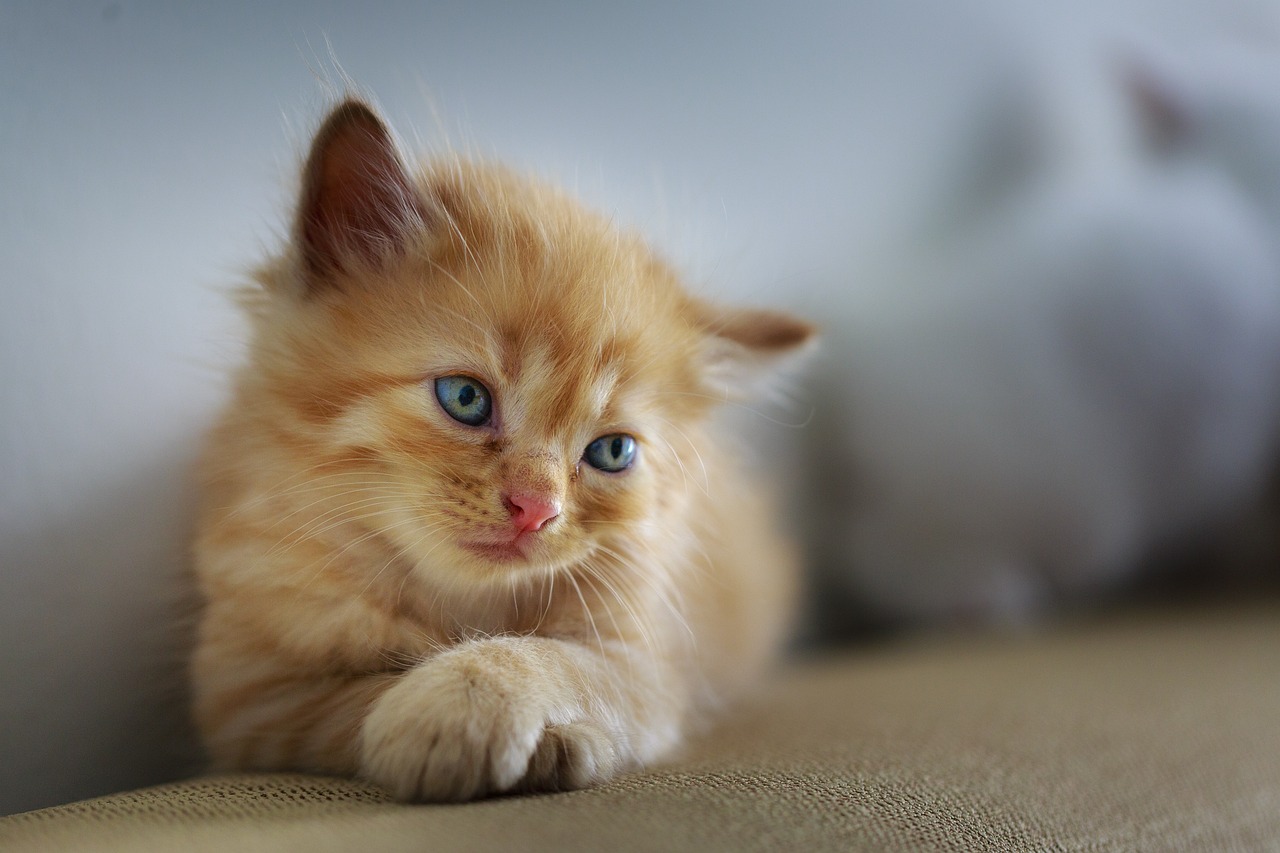
Understanding Your Cat's Behavior
Before diving into the fun world of training your feline friend to high-five, it's crucial to first understand their unique behaviors and instincts. Cats are not just furry companions; they are complex creatures with their own set of rules, moods, and preferences. Just like us, they have different personalities, and recognizing these traits can make your training sessions more effective and enjoyable.
One of the key aspects to consider is that cats are naturally curious and independent animals. Unlike dogs, who often seek approval from their owners, cats tend to be more self-reliant. This means that training requires a different approach. Instead of forcing them to comply, think of it as an invitation to play a game together. When you approach training as a fun activity rather than a chore, your cat is more likely to engage and respond positively.
Another important factor is the concept of territoriality. Cats are creatures of habit and often feel most comfortable in familiar settings. Understanding their territory can help you create a conducive environment for training. For example, if your cat has a favorite spot where they like to lounge, consider using that area for your training sessions. This will help them feel secure and more willing to participate.
Moreover, be mindful of your cat's body language. Cats communicate a lot through their posture, tail position, and even their ears. For instance, if your cat's ears are facing forward and their tail is upright, they are likely feeling curious and open to interaction. Conversely, if their ears are flattened or their tail is twitching, it may indicate that they are annoyed or uninterested. Paying attention to these signals can help you adjust your training methods in real-time, ensuring a positive experience.
To further enhance your understanding, here are a few common behaviors to watch for:
- Purring: Often a sign of contentment, but can also indicate discomfort in some situations.
- Slow Blinking: A sign of trust and affection; if your cat gives you a slow blink, it’s like a kitty kiss!
- Scratching: A natural behavior for cats to mark their territory and keep their claws healthy.
In conclusion, understanding your cat's behavior is the first step in creating a successful training experience. By recognizing their instincts, preferences, and body language, you can tailor your approach to fit their unique personality. This not only makes the training process smoother but also strengthens the bond between you and your furry friend. So, take a moment to observe your cat before you start the high-five training; you might be surprised at what you learn!
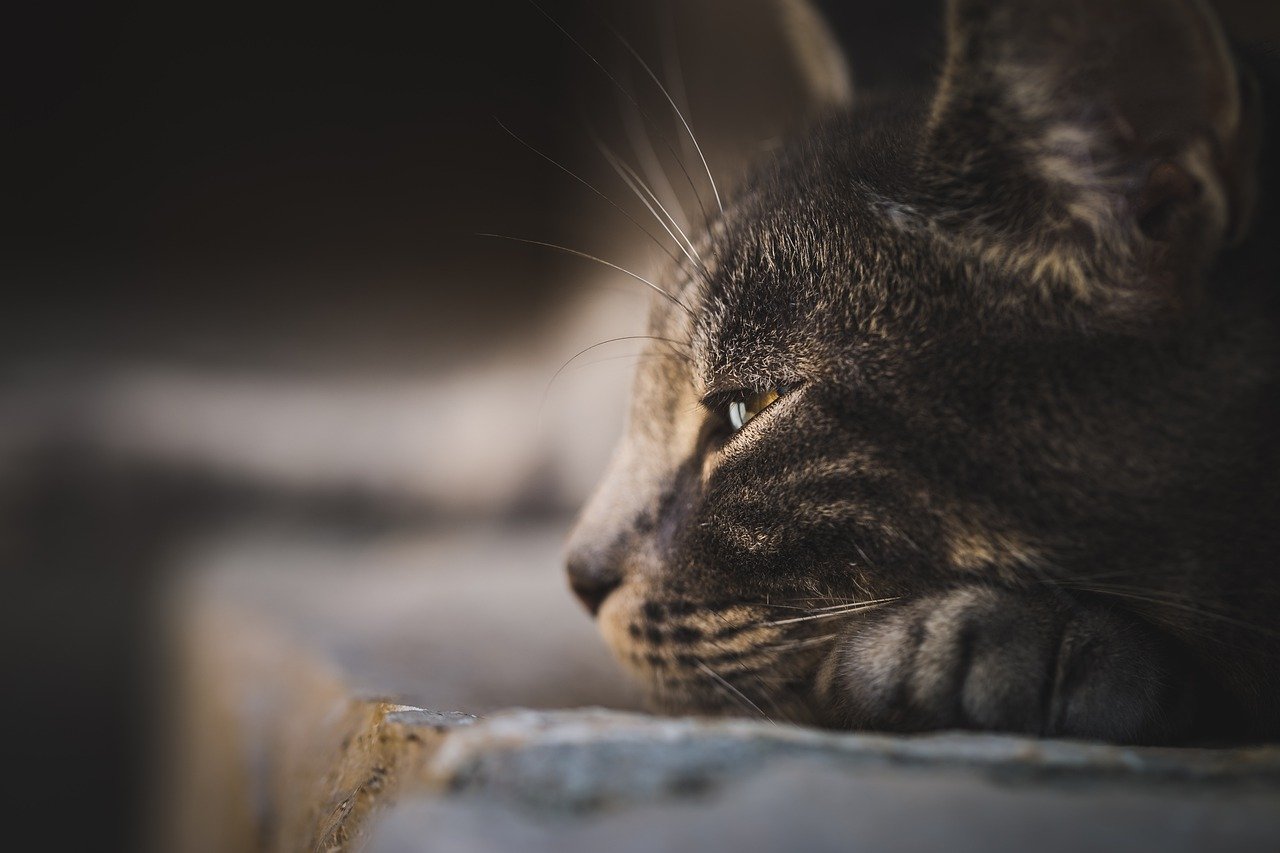
Choosing the Right Environment
Creating the perfect environment for training your cat is like setting the stage for a grand performance; it can make all the difference in how well your feline friend learns to high-five. Imagine trying to focus on a task in a noisy café—frustrating, right? Cats are no different! They thrive in spaces that are calm and free from distractions. This means finding a quiet corner of your home where your cat feels safe and comfortable. Look for a spot away from the hustle and bustle of daily life, where you can engage in uninterrupted training sessions.
When you’ve identified a suitable location, consider the following elements to enhance your training environment:
- Comfort: Ensure the area is cozy. A soft mat or blanket can help your cat feel at ease and more willing to participate.
- Lighting: Good lighting is essential. Natural light is ideal, but if that’s not possible, ensure the area is well-lit to help your cat see your hand signals clearly.
- Temperature: Cats are sensitive to temperature. A comfortable environment should neither be too hot nor too cold to keep your cat engaged.
Moreover, it’s important to minimize distractions. If your home has other pets, try to train when they’re occupied or in another room. Loud noises from the TV or music can also disrupt your cat’s focus. You want your cat to associate training with a positive experience, not one filled with interruptions. By creating a peaceful atmosphere, you’re setting the stage for success.
Lastly, timing is everything. Choose moments when your cat is naturally more active and alert, typically after a nap or play session. This is when they’re most likely to engage and learn effectively. Observing your cat’s daily routine will help you pinpoint these prime training times. Remember, a well-chosen environment can transform your training sessions from a chore into a delightful bonding experience!
Minimizing Distractions
This article explores effective techniques for training your cat to perform the fun trick of high-fiving, enhancing the bond between you and your feline friend while providing mental stimulation.
Before you start training, it's essential to understand your cat's natural behaviors and instincts, which can help tailor your approach and make the learning process more enjoyable for both of you.
Creating a suitable training environment is crucial for your cat's focus and comfort. A quiet, distraction-free space can significantly enhance your training sessions and increase the likelihood of success.
When it comes to training your cat, is key. Imagine trying to learn a new skill while a loud party is happening around you; it would be nearly impossible to focus! Similarly, your cat needs a serene environment to grasp the concept of high-fiving. Start by choosing a space where your cat feels safe and at ease, away from the hustle and bustle of everyday life.
Consider these essential factors to create a distraction-free zone:
- Noise Levels: Keep the volume down. Turn off the TV, radio, or any other loud appliances that might divert your cat's attention.
- Other Pets: If you have multiple pets, try to isolate your training sessions. A curious dog or another cat can easily steal the spotlight and distract your feline friend.
- Visual Stimuli: Avoid training in front of windows where outside activity can catch your cat's eye. Birds, squirrels, or even passing cars can be incredibly distracting!
By creating a calm atmosphere, you allow your cat to focus solely on you and the task at hand. This focused environment not only enhances your cat's learning experience but also builds a stronger connection between you both. Remember, the goal is to make training enjoyable, and a peaceful setting is a significant step towards achieving that.
Scheduling training sessions when your cat is naturally more active and alert can improve engagement. Observing your cat's daily routine will help you determine the best times for training.
Incorporating treats and praise as rewards for successful attempts reinforces desired behaviors. Positive reinforcement is key to encouraging your cat to participate enthusiastically in the training process.
Understanding your cat's body language and vocalizations can help you gauge their comfort and willingness to learn. This awareness allows you to adjust your training techniques accordingly for better results.
A structured approach to teaching your cat to high-five can streamline the learning process. Breaking it down into manageable steps ensures clarity for both you and your cat.
Begin by introducing a target, such as your hand or a clicker, to familiarize your cat with the concept of reaching out. This initial step sets the foundation for the high-five trick.
Once your cat is comfortable with the target, start introducing a verbal cue, like high-five, to associate the action with the command. Consistency is essential for effective communication during training.
Training a cat requires patience and consistency. Regular practice and a calm demeanor will help reinforce learning and build your cat's confidence in performing the trick.
Keeping track of your cat's progress can motivate both you and your pet. Documenting milestones helps you identify what techniques work best and where adjustments may be needed.
Recognizing when your cat is losing interest or becoming frustrated is vital. Taking breaks ensures training remains a positive experience, preventing burnout and maintaining enthusiasm for future sessions.
Q: How long should each training session last?
A: Ideally, keep training sessions between 5 to 10 minutes. Cats have short attention spans, so shorter, more frequent sessions are more effective.
Q: What if my cat doesn't seem interested in training?
A: Every cat is different. If your cat isn't interested, try using different treats or toys as rewards, or change the training environment to spark their curiosity.
Q: Can I train an older cat to high-five?
A: Absolutely! Cats of all ages can learn new tricks. Just be patient and adjust your training methods to suit your cat's unique personality.
Timing Your Sessions
When it comes to training your cat to high-five, timing is everything! Just like humans, cats have their own natural rhythms and energy levels throughout the day. Observing these patterns can make a significant difference in how well your training sessions go. For instance, many cats tend to be more active and alert during the early morning or late evening hours. This is often when they are most playful and engaged, making it the perfect time to introduce new tricks.
To maximize your cat's focus and enthusiasm, consider scheduling training sessions around these peak activity times. You might find that your furry friend is more inclined to participate and learn when they’re feeling sprightly. Alternatively, if your cat is more of a night owl, those late-night training sessions could be the secret ingredient for success!
Another important factor to consider is the duration of your training sessions. Cats have relatively short attention spans, so it’s best to keep sessions brief but effective. Aim for sessions that last between 5 to 10 minutes, allowing your cat to absorb the information without feeling overwhelmed. You can always have multiple short sessions throughout the day rather than one long session. This approach keeps the learning experience fresh and exciting for your cat.
Here’s a quick table summarizing the ideal timing for your training sessions:
| Time of Day | Cat's Energy Level | Recommended Session Duration |
|---|---|---|
| Early Morning | High | 5-10 minutes |
| Late Afternoon | Medium | 5-10 minutes |
| Evening | High | 5-10 minutes |
| Late Night | Variable | 5-10 minutes |
Additionally, be mindful of your cat's mood and energy levels on any given day. If your cat seems sleepy or uninterested, it might be a sign that today isn’t the best day for training. Instead of pushing through, consider taking a break and trying again later when your cat is more engaged. By respecting your cat's natural tendencies and timing your sessions accordingly, you’ll create a more effective and enjoyable training experience for both of you!
Using Positive Reinforcement
When it comes to training your cat, positive reinforcement is the golden rule. Think of it as a high-five for your feline friend every time they get it right! Instead of scolding or using negative methods, which can lead to fear or anxiety, you want to create an environment where your cat feels encouraged and excited to learn. So, how do you effectively implement this technique?
First, you need to identify what motivates your cat. It could be their favorite treats, a beloved toy, or even some affectionate petting. For instance, if your cat goes wild for tuna-flavored treats, then that's your secret weapon! Every time your cat successfully attempts the high-five, reward them immediately. This helps them associate the action with something positive, making them more likely to repeat it.
It's essential to be consistent with your rewards. If you only offer treats sometimes, your cat might get confused about what behavior is being rewarded. Instead, aim for a structured approach where every successful attempt is met with a reward. This consistency reinforces their understanding of the trick and keeps them engaged. You could even create a simple table to track which rewards your cat responds to best:
| Treats | Response Level |
|---|---|
| Tuna Treats | High |
| Chicken Flavored Crunchies | Medium |
| Catnip Toy | Low |
Additionally, don't underestimate the power of verbal praise! Cats may not understand words the same way we do, but they can certainly pick up on your tone and enthusiasm. When your cat successfully performs the high-five, use a cheerful voice to say something like, "Good job!" or "You're such a clever kitty!" This kind of verbal affirmation can be just as rewarding as a treat, strengthening your bond and making training a fun experience.
Lastly, remember that training sessions should be short and sweet. Cats have a shorter attention span than dogs, so aim for sessions of about 5-10 minutes. This keeps your cat engaged without overwhelming them. Always end on a positive note, even if it means just giving a treat for a successful attempt, even if it wasn't a perfect high-five. This ensures that your cat looks forward to the next training session, making the whole process enjoyable for both of you!
Recognizing Your Cat's Signals
When it comes to training your cat, understanding their signals is like having a secret decoder ring. Cats communicate through a variety of body language cues and vocalizations, and being able to interpret these can significantly enhance your training sessions. For instance, if your cat is swishing their tail rapidly, it might indicate agitation or frustration, signaling that it’s time to take a break. On the other hand, a cat that is kneading with their paws or purring softly is likely feeling content and open to learning.
One of the most important aspects of recognizing your cat's signals is to observe their posture. A relaxed cat will often have their ears pointed forward, their body loose, and their tail held high. These are all signs that your furry friend is comfortable and ready to engage. Conversely, if their ears are pinned back or their body is tense, it’s a clear indication that they might not be in the mood for training. Paying attention to these cues will allow you to adjust your approach accordingly, making the experience more enjoyable for both of you.
Moreover, vocalizations can also provide insight into your cat's feelings. A soft meow might indicate curiosity, while a loud yowl could express annoyance or disinterest. It’s essential to learn the different sounds your cat makes and what they typically mean. This will not only help you understand when to push forward with training and when to ease off, but it will also strengthen the bond between you and your pet. Remember, training should be a fun and rewarding experience, not a chore!
To make this even clearer, here’s a quick reference table summarizing some common signals to watch for during training:
| Signal | Meaning |
|---|---|
| Tail Held High | Happy and confident |
| Ears Forward | Curious and engaged |
| Swishing Tail | Agitated or annoyed |
| Purring | Content and relaxed |
| Ears Pinned Back | Uncomfortable or scared |
In conclusion, being attuned to your cat's signals will not only enhance your training efforts but also deepen your understanding of their unique personality. When you recognize and respect their feelings, training becomes a collaborative effort, paving the way for a stronger bond and a more fulfilling relationship. So, the next time you sit down for a training session, take a moment to observe your cat's body language and vocalizations, and let them guide you on this delightful journey of learning together.
- How long should training sessions last? Training sessions should be short and sweet, ideally around 5 to 10 minutes, to keep your cat engaged without overwhelming them.
- What if my cat doesn't seem interested in training? If your cat shows disinterest, try changing the treats or the environment. Sometimes a new approach can spark their curiosity!
- Can I train my cat at any age? Absolutely! While younger cats may learn faster, older cats can also pick up new tricks with patience and consistency.
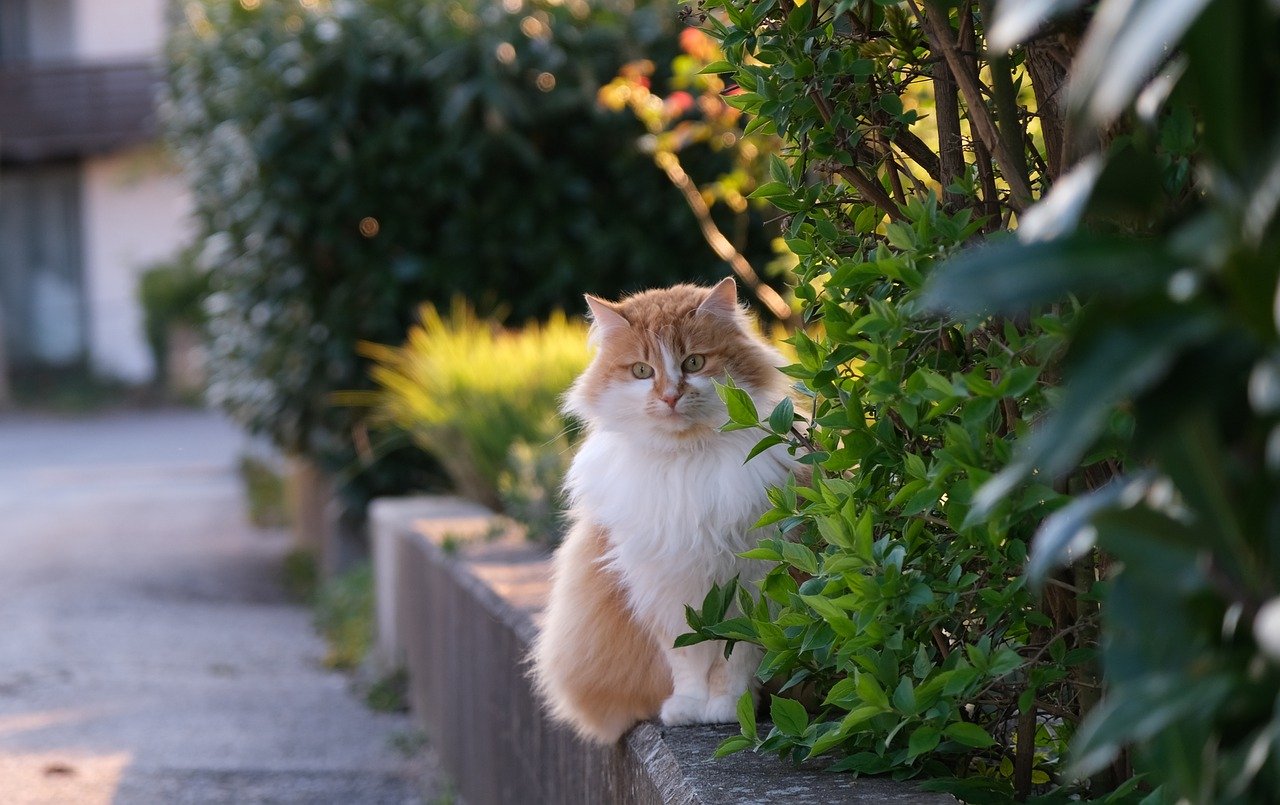
Step-by-Step Training Process
Teaching your cat to high-five is an exciting journey that not only showcases your cat's intelligence but also deepens the bond you share. To make this process smooth and enjoyable, it's essential to break it down into simple, manageable steps. Think of it as a dance where both you and your feline friend need to be in sync. The goal is to create a fun atmosphere that encourages learning while ensuring your cat feels comfortable and engaged.
The first step in this training process is to introduce a target. This could be your hand or a clicker. The idea here is to familiarize your cat with the concept of reaching out. You can start by holding your hand in front of your cat’s nose, allowing them to sniff and explore. When they make contact with your hand, whether it’s a gentle paw or a curious nudge, immediately reward them with a treat and enthusiastic praise. This positive reinforcement establishes a connection between the action and the reward, making it more likely for them to repeat the behavior.
Once your cat is comfortable with the target, the next step is to gradually add a cue. Choose a verbal command like “high-five” and use it consistently every time your cat reaches out to your hand. It’s important to use the same tone and inflection so your cat can associate the sound with the action. During this phase, patience is key. Your cat may take some time to understand what you’re asking, but with consistent practice, they’ll start to connect the dots.
As you progress, it’s beneficial to keep track of your cat’s learning journey. You might consider maintaining a simple
| Session Number | Date | Target Introduced | Verbal Cue Used | Cat's Response |
|---|---|---|---|---|
| 1 | MM/DD/YYYY | Hand | High-Five | Positive |
| 2 | MM/DD/YYYY | Clicker | High-Five | Neutral |
| 3 | MM/DD/YYYY | Hand | High-Five | Positive |
Tracking progress not only keeps you motivated but also helps you identify patterns in your cat's learning style. Some cats may respond better to certain types of rewards or cues, so being observant and adaptable is crucial.
Another vital aspect of this training process is knowing when to take breaks. Cats, like humans, can become fatigued or frustrated if they feel overwhelmed. If you notice your cat becoming disinterested or agitated, it’s time to pause. This ensures that training remains a fun and positive experience rather than a chore. You can always come back to it later when your cat is more focused and eager to participate.
Remember, the ultimate goal is to create a joyful learning environment where your cat feels safe and excited to engage with you. With patience, consistency, and a sprinkle of creativity, your cat will be high-fiving in no time!
Q: How long does it take to teach my cat to high-five?
A: The time it takes can vary greatly depending on your cat's personality and previous training experience. Some cats may learn in a few sessions, while others might need a few weeks. The key is to be patient and consistent.
Q: What if my cat isn’t interested in treats?
A: If your cat isn’t motivated by treats, try using their favorite toy or extra affection as a reward. Every cat is different, so find what excites your feline friend the most!
Q: Can I train my cat in a noisy environment?
A: While it’s possible, a quiet and distraction-free environment is highly recommended. This helps your cat focus and makes the training process more effective.
Q: What should I do if my cat seems frustrated?
A: If your cat shows signs of frustration, take a break. Allow them to relax and come back to training when they’re more receptive. Training should always be a positive experience!
Introducing the Target
When it comes to teaching your cat to high-five, the first step is all about introducing a target. This target can be your hand, a clicker, or even a small toy that your cat can reach out to. The key here is to make this initial step engaging and fun for your feline friend. Think of it as setting the stage for a performance; you want to capture their attention and get them excited about what's to come!
Start by holding your hand flat, palm facing your cat, and gently encourage them to touch it with their paw. You can use a treat as a lure, moving it just out of reach so they have to stretch a little. As soon as they make contact with your hand, give them a treat and some enthusiastic praise. This positive reinforcement will help them associate the act of reaching out with something rewarding. Remember, cats are naturally curious creatures, so use that to your advantage!
It’s important to keep these sessions short and sweet. Cats have limited attention spans, so aim for about 5 to 10 minutes of training at a time. If your cat seems to lose interest, it’s perfectly fine to take a break and try again later. The goal is to make this a fun experience, not a chore. You want your cat to look forward to training sessions, just like a child looks forward to playtime!
As your cat becomes more comfortable with the target, you can gradually increase the difficulty by moving your hand slightly further away or introducing a clicker as a target. The clicker can serve as a great tool to mark the exact moment your cat makes the desired action, reinforcing the behavior even more effectively. Just remember, patience is key! Each cat learns at their own pace, so celebrate the small victories along the way.
Gradually Adding the Cue
Once your cat has become familiar with the target, it’s time to introduce a verbal cue to signal the action you want them to perform. This is a crucial step in the training process, as it helps your cat associate the word with the action of high-fiving. Start by using a simple, distinct word or phrase, such as "high-five". It’s important to choose a cue that is easy to say and remember, as consistency is key in training.
To effectively add the cue, begin with your cat in front of you and the target (your hand or a clicker) visible. As your cat reaches out to touch the target, clearly say the cue word, "high-five", in a cheerful tone. This will help your cat link the sound of your voice with the action they are performing. Timing is everything here; you want to say the cue at the moment they make contact with the target. This immediate association reinforces their understanding of what you are asking for.
As your cat starts to grasp the connection between the cue and the action, gradually reduce your reliance on the target. You can do this by moving your hand farther away or by simply holding your hand in the air and waiting for your cat to respond to the verbal cue alone. If your cat seems confused or hesitant, don’t rush the process. Go back to using the target until they feel more comfortable. Remember, patience is your best friend in this journey!
To keep track of your cat’s progress, consider maintaining a simple training log. This can include notes on when you introduced the cue, how your cat responded, and any adjustments you made along the way. Below is a sample table you can use to document the training sessions:
| Date | Session Duration | Cat's Response | Notes |
|---|---|---|---|
| 2023-10-01 | 10 minutes | Positive | Introduced verbal cue "high-five" |
| 2023-10-02 | 15 minutes | Confused | Returned to using target for clarity |
By gradually adding the cue and observing your cat's responses, you’ll create a clear communication channel that makes learning fun and engaging. Remember, every cat is unique, and some may take longer to learn than others. Celebrate small victories, and don’t forget to shower your furry friend with praise and treats whenever they make progress!
- How long does it take to teach a cat to high-five? - The time varies by cat, but with consistent practice, many cats can learn the trick in a few weeks.
- What if my cat doesn’t seem interested? - Try using more enticing treats or playtime as motivation. Some cats respond better to different types of rewards.
- Can older cats learn tricks too? - Absolutely! Cats of all ages can learn new tricks, though older cats may take a bit longer to adjust.
This article explores effective techniques for training your cat to perform the fun trick of high-fiving, enhancing the bond between you and your feline friend while providing mental stimulation.
Before you start training, it's essential to understand your cat's natural behaviors and instincts, which can help tailor your approach and make the learning process more enjoyable for both of you.
Creating a suitable training environment is crucial for your cat's focus and comfort. A quiet, distraction-free space can significantly enhance your training sessions and increase the likelihood of success.
Removing distractions such as loud noises or other pets can help your cat concentrate better during training. This allows for a more effective learning experience and fosters a positive association with the activity.
Scheduling training sessions when your cat is naturally more active and alert can improve engagement. Observing your cat's daily routine will help you determine the best times for training.
Incorporating treats and praise as rewards for successful attempts reinforces desired behaviors. Positive reinforcement is key to encouraging your cat to participate enthusiastically in the training process.
Understanding your cat's body language and vocalizations can help you gauge their comfort and willingness to learn. This awareness allows you to adjust your training techniques accordingly for better results.
A structured approach to teaching your cat to high-five can streamline the learning process. Breaking it down into manageable steps ensures clarity for both you and your cat.
Begin by introducing a target, such as your hand or a clicker, to familiarize your cat with the concept of reaching out. This initial step sets the foundation for the high-five trick.
Once your cat is comfortable with the target, start introducing a verbal cue, like high-five, to associate the action with the command. Consistency is essential for effective communication during training.
Training a cat requires patience and consistency. Regular practice and a calm demeanor will help reinforce learning and build your cat's confidence in performing the trick.
Keeping track of your cat's progress can motivate both you and your pet. Documenting milestones helps you identify what techniques work best and where adjustments may be needed.
Recognizing when your cat is losing interest or becoming frustrated is vital. Taking breaks ensures training remains a positive experience, preventing burnout and maintaining enthusiasm for future sessions.
Now, let's dive into the exciting part—teaching your cat to high-five! This trick not only showcases your cat's intelligence but also strengthens your bond. Imagine the joy on your friends' faces when your feline superstar greets them with a high-five! To get started, ensure your cat is in a comfortable position, preferably sitting or standing in front of you. It's essential to keep the atmosphere light and filled with positivity. Start by holding your hand out flat, palm facing your cat, and gently encourage them to touch your hand with their paw.
At this stage, using a clicker or saying "yes" when they make contact will help reinforce the behavior. Remember, patience is key! If your cat hesitates, don't force it. Instead, use treats to lure them closer. You can even create a small chart to track their progress, noting each time they successfully touch your hand. Over time, they will associate the action with the command and the reward.
Incorporating playful elements can also enhance the experience. Use a toy or a feather to entice your cat to reach out. This not only makes the training session fun but also keeps your cat engaged. Just like humans, cats love a bit of playfulness in their learning process!
- How long does it take to teach a cat to high-five?
It varies by cat, but with consistent practice, many cats can learn the trick in a few weeks. - What if my cat doesn't seem interested?
Try different treats or toys to see what motivates them. Some cats respond better to certain rewards. - Can all cats learn this trick?
Most cats can learn to high-five, but some may take longer than others. Patience and positive reinforcement are crucial! - Is it safe for my cat?
Yes, training is safe as long as you use gentle techniques and respect your cat's comfort level.
This article explores effective techniques for training your cat to perform the fun trick of high-fiving, enhancing the bond between you and your feline friend while providing mental stimulation.
Before you start training, it's essential to understand your cat's natural behaviors and instincts, which can help tailor your approach and make the learning process more enjoyable for both of you.
Creating a suitable training environment is crucial for your cat's focus and comfort. A quiet, distraction-free space can significantly enhance your training sessions and increase the likelihood of success.
Removing distractions such as loud noises or other pets can help your cat concentrate better during training. This allows for a more effective learning experience and fosters a positive association with the activity.
Scheduling training sessions when your cat is naturally more active and alert can improve engagement. Observing your cat's daily routine will help you determine the best times for training.
Incorporating treats and praise as rewards for successful attempts reinforces desired behaviors. Positive reinforcement is key to encouraging your cat to participate enthusiastically in the training process.
Understanding your cat's body language and vocalizations can help you gauge their comfort and willingness to learn. This awareness allows you to adjust your training techniques accordingly for better results.
A structured approach to teaching your cat to high-five can streamline the learning process. Breaking it down into manageable steps ensures clarity for both you and your cat.
Begin by introducing a target, such as your hand or a clicker, to familiarize your cat with the concept of reaching out. This initial step sets the foundation for the high-five trick.
Once your cat is comfortable with the target, start introducing a verbal cue, like high-five, to associate the action with the command. Consistency is essential for effective communication during training.
When you say the word high-five, make sure you are also using the same hand gesture to indicate what you want your cat to do. This dual approach not only creates a clear connection between the command and the action but also helps your cat understand what is expected of them. It's like teaching a child to associate the word "jump" with the action of jumping—repetition and clarity are key!
Here’s a simple breakdown of how you can implement this:
- Use the same tone and volume when giving the command.
- Always follow the command with a reward if your cat engages in the desired behavior.
- Practice regularly but keep sessions short to maintain your cat's interest.
Remember, the goal is to create a fun and engaging atmosphere where your cat feels encouraged to participate. If you maintain consistency with your cues and rewards, your cat will begin to associate the action of high-fiving with your verbal command, making the learning process smoother and more enjoyable.
Training a cat requires patience and consistency. Regular practice and a calm demeanor will help reinforce learning and build your cat's confidence in performing the trick.
Keeping track of your cat's progress can motivate both you and your pet. Documenting milestones helps you identify what techniques work best and where adjustments may be needed.
Recognizing when your cat is losing interest or becoming frustrated is vital. Taking breaks ensures training remains a positive experience, preventing burnout and maintaining enthusiasm for future sessions.
Q: How long does it take to teach my cat to high-five?
A: The time it takes can vary greatly depending on your cat's personality and previous training. Some cats may learn within a few sessions, while others may take weeks. Patience is key!
Q: What if my cat doesn’t seem interested in learning?
A: If your cat is uninterested, try using more enticing treats or engaging toys. Remember to keep the training sessions short and fun to spark their interest.
Q: Can I teach my cat other tricks besides high-fiving?
A: Absolutely! Cats can learn a variety of tricks, such as sitting, rolling over, or even fetching. The same principles of positive reinforcement and consistency apply.
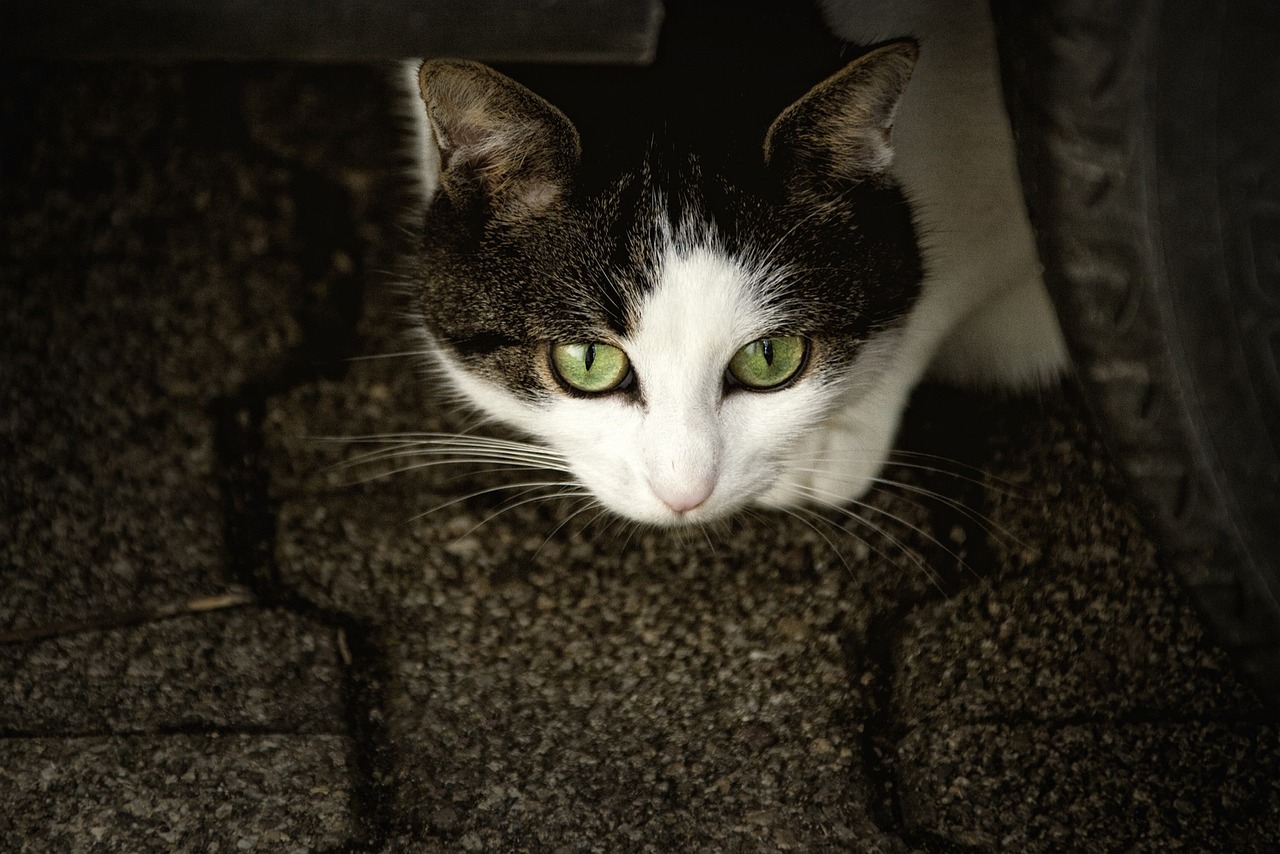
Maintaining Patience and Consistency
Training your cat to perform a high-five can be an exciting journey, but it’s important to remember that patience and consistency are your best friends in this process. Cats, unlike dogs, may not always respond immediately to commands or cues, and that’s perfectly normal. It’s essential to approach each training session with a calm and relaxed demeanor. If you feel rushed or frustrated, your cat will likely pick up on that energy, making them less inclined to participate. Think of it like trying to teach a child a new game; if they sense your impatience, they might lose interest or feel anxious.
To ensure a productive training experience, aim for regular practice sessions that fit into your cat’s routine. Short, frequent sessions—about 5 to 10 minutes—are often more effective than longer, drawn-out ones. Cats have shorter attention spans, so keeping things brief and engaging is key. Consider the following tips to maintain patience and consistency during your training:
- Stay Positive: Celebrate small victories, whether it’s your cat reaching out a paw or even just showing interest. Positive reinforcement will encourage them to keep trying.
- Be Consistent: Use the same commands and cues every time. This consistency helps your cat understand what you expect from them.
- Keep a Training Journal: Documenting your sessions can help you track progress and identify patterns in your cat’s learning style.
As you navigate the ups and downs of training, remember that every cat is unique. Some may catch on quickly, while others might take a bit longer to grasp the concept. It’s crucial to adjust your approach based on your cat's individual personality and learning pace. If you notice that your cat is becoming frustrated or disinterested, take a step back and reassess your methods. Sometimes, a simple break can rejuvenate their enthusiasm and make the training process more enjoyable.
Incorporating playtime into your training can also be beneficial. Use toys or interactive activities to keep your cat engaged. This not only makes training more fun but also creates a positive association with the high-five trick. Remember, the goal is to strengthen your bond with your feline friend while teaching them a fun and impressive trick!
Q: How long will it take to teach my cat to high-five?
A: The time it takes can vary significantly from one cat to another. Some may learn in a few days, while others might take weeks. Be patient and consistent, and celebrate small milestones along the way.
Q: What if my cat doesn’t seem interested in training?
A: If your cat isn’t showing interest, try changing your approach. Use different treats, toys, or even the time of day you train. Sometimes, finding the right motivation can make all the difference.
Q: Can I train my cat using only verbal commands?
A: While verbal commands are important, incorporating visual cues, such as gestures or targets, can enhance understanding and make the training process easier for your cat.
Tracking Progress
Tracking your cat's progress during the high-five training can be a game changer! Just like a coach monitors an athlete's performance, keeping tabs on your feline's learning journey can help you identify what works and what needs a little tweaking. It's all about creating a roadmap to success that both you and your kitty can follow. So, how do you go about this?
First off, consider keeping a training journal. This can be as simple as a notepad or a digital document where you jot down notes after each session. Record the date, duration of the session, and any milestones achieved. For example:
| Date | Duration | Milestones Achieved |
|---|---|---|
| October 1 | 10 minutes | Introduced target |
| October 3 | 15 minutes | First high-five attempt |
| October 5 | 12 minutes | Consistent response to cue |
By keeping a record, you can celebrate the small victories, which is a great morale booster for both you and your cat. Plus, it helps you pinpoint any patterns—like if your cat performs better at certain times of the day or responds well to specific rewards.
Another effective method is to use a progress chart. Visual aids can be incredibly motivating! You could create a simple chart that marks each successful high-five with a sticker or a checkmark. This not only makes it fun but also gives your cat a sense of achievement every time they see that chart fill up.
Remember, every cat is unique, and their learning pace can vary. Some might pick up the trick in just a few sessions, while others may take a bit longer. It's essential to be patient and adjust your training methods based on your observations. If you notice that your cat is struggling with a particular step, don’t hesitate to go back a few paces and reinforce that part before moving forward.
Ultimately, tracking progress is about creating a positive and engaging training experience. Celebrate the wins, learn from the setbacks, and most importantly, have fun with it! Your cat will not only learn to high-five but will also enjoy the bonding time spent with you.
- How long does it take to teach a cat to high-five? - The time varies by cat, but with consistent practice, many cats can learn the trick in a few weeks.
- What if my cat doesn't seem interested? - Try changing the environment or the rewards. Sometimes a new treat or a quieter space can reignite their interest.
- Can I use clicker training for this? - Absolutely! Clicker training is an excellent way to mark desired behaviors and can enhance the learning process.
Knowing When to Take Breaks
Training your cat can be an exhilarating journey, but it's essential to recognize when your furry friend needs a break. Just like humans, cats can experience fatigue, boredom, or frustration during training sessions. If you notice your cat becoming less engaged, it might be time to pause and recharge. But how do you know when to take that crucial break? Here are some signs to watch for:
- Loss of Interest: If your cat starts looking away, yawning, or wandering off, it’s a clear signal that their attention has drifted.
- Restlessness: Pacing or fidgeting can indicate that your cat is feeling overwhelmed or anxious.
- Signs of Frustration: If your cat is swatting at your hand or vocalizing more than usual, they might be feeling frustrated with the training process.
Taking breaks is not just about stopping the training; it's an opportunity for both you and your cat to relax and reset. Consider engaging in a different activity during this time, like playing with a favorite toy or enjoying a cuddle session. This not only helps in maintaining a positive training environment but also strengthens the bond between you and your pet.
Remember, the goal is to make training a fun and rewarding experience. If training becomes a chore, your cat may associate it with negative feelings. So, keep an eye on their mood and know when to hit the pause button. A well-timed break can rejuvenate your cat’s interest and enthusiasm, making them eager to continue learning once you resume.
- How long should training sessions last? Training sessions should ideally be short, around 5 to 10 minutes, to keep your cat engaged and interested.
- What if my cat doesn't respond to treats? Some cats may not be motivated by treats. Try using their favorite toy or even affection as a reward instead.
- Can I train my cat at any age? Yes! Cats can learn at any age, but younger cats may pick up tricks faster due to their natural curiosity.
- How often should I train my cat? Consistency is key. Aim for daily short sessions to reinforce learning without overwhelming your cat.
Frequently Asked Questions
- How long does it take to teach my cat to high-five?
The time it takes varies from cat to cat. Some may catch on in just a few sessions, while others might need a couple of weeks. Patience is key! Just like us, every cat learns at their own pace.
- What treats work best for training my cat?
Using small, tasty treats that your cat loves can make a huge difference. Think about using soft treats or even pieces of their favorite wet food. The more enticing the reward, the more motivated your cat will be!
- Can I train my cat to high-five if they are older?
Absolutely! Age is just a number when it comes to training. Older cats can learn new tricks just as easily as younger ones, especially if you use positive reinforcement and keep the sessions short and fun.
- What if my cat seems uninterested in training?
If your cat isn't showing interest, try changing the environment or the time of day you train. Sometimes a different location or a little more playtime beforehand can spark their curiosity. Remember, make it fun!
- Is it okay to use a clicker for training?
Definitely! Clickers can be a fantastic tool for training. They provide a clear signal to your cat that they did something right, which can help reinforce the behavior you're trying to teach.
- How do I know if my cat is frustrated during training?
Watch for signs like turning away, swatting at your hand, or vocalizing loudly. If you notice any of these behaviors, it’s a good idea to take a break and try again later. Keeping training sessions positive is crucial!
- Can I train multiple tricks at once?
It's best to focus on one trick at a time. Cats can get overwhelmed easily, so mastering the high-five before moving on to other tricks will help maintain their interest and confidence.
- What should I do if my cat doesn't respond to the verbal cue?
If your cat isn't responding to the verbal cue, it may be too soon to introduce it. Go back to using just the target and positive reinforcement until they consistently perform the action. Then, gradually add the cue back in.

